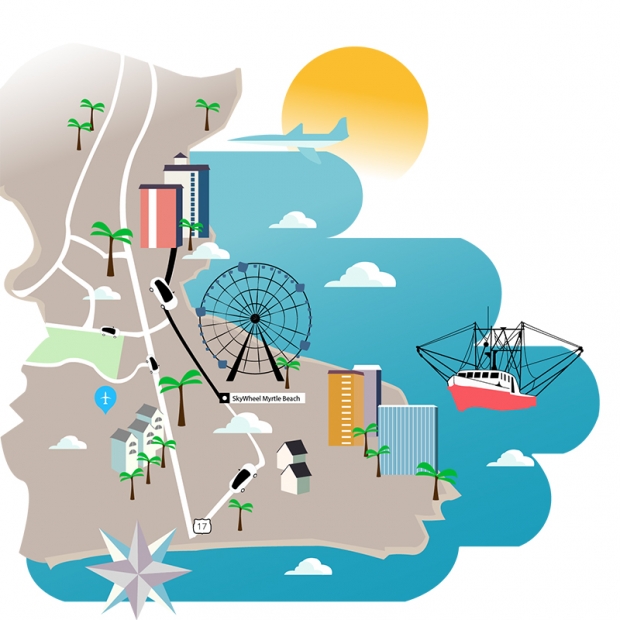An insider’s look at the business of ride sharing

Saying my resume is a bit schizophrenic is an understatement—I’ve had a lot of odd, unrelated jobs since the age of 14. Last year I added “Uber Driver” to my ever-growing list. It turns out the Uber experiment (I no longer drive for them) was eye opening and relatively lucrative, but not a priority, so I resigned my post. Having been through the process, however, I now know the score should I ever want to (or need to) reengage with the world’s largest ride sharing company.
The Case for Ubering
Uber is the 10-year-old granddaddy of the TNCs (transportation networking companies) that also include Lyft, Via and Juno. The largest of its type, Uber has turned 2 million people in some 785 metropolitan regions around the globe into de facto cab drivers. Its appeal to so many is that you work only when you are able, and only if you want to. Right up my alley.
Having been an enthusiastic Uber customer for years, almost exclusively when traveling, the transition to driver was easy. I liked how the program worked, that it was generally cheaper and faster than calling a cab, and that each ride would be an adventure with some new driver for me to interrogate (I find I’m always interviewing people—can’t help it). The drivers I met have included college students, college professors, immigrants, moonlighting cab drivers, semi stay-at-home mothers and fathers, retirees and all manner of men and women from all walks of life, all wearing the Uber badge. I began to sense they were kindred spirits.
Getting Myself Ubered
The signup was easy, and free (almost). I had to pay a $20 inspection fee to a local garage that certified my 2013 Hyundai Santa Fe Sport was Uber safe. As instructed, I snapped a few pictures of my car, insurance card, registration and driver’s license. I then uploaded them to Uber headquarters and gave them my banking info (they direct deposit your earnings). A few days and a background check later, I was Uber-ready. The requirements to become a driver get tweaked every so often, but are easy to see at uber.com
Many have raised legitimate concerns about the sharing economy of companies like Uber, Airbnb and VRBO as being unfair to traditional businesses. These apps and their entrenchment kind of make the argument moot. They are a part of the global economy lorded over by the Internet Genie, who doesn’t seem likely to re-enter his bottle anytime soon.
My First Customer
With my qualified car freshly cleaned and with a few hours to spare one day, I clicked on my GPS-driven Uber app. When my screen flashed and the Uber bell chimed, I had 30 seconds to accept or decline the ride. Because I was the closest Uber driver to the customer in need, Uber had chosen me. Me! I accepted, ran to my car while studying the pick-up info, and drove four blocks from my home on my way to pick up Thomas. After the fallible Uber GPS had me turning left to pick up Thomas in the middle of the Atlantic Ocean, I panicked briefly. Then I saw in my rearview mirror the signal light from a waving smart phone (the universal Uber gesticulation), and realized Uber should have sent me right instead of left. I spun around and raced across the street.
It turns out Thomas was with three other guys, all golfers, and we packed into my small SUV and drove to Greg Norman’s Australian Grille. They had been pre-gaming (drinking a little) and were in good moods and talkative. I felt the need to share with them that this was my inaugural Uber trip and they patted me on the back, wished me well and gave me a $10 cash tip. Tipping was at first discouraged in the Uber world, but the app now allows for cash-free tipping. The round trip, including pick up, lasted 28 minutes. With tip I banked around $30, and had a nice chat with a few fellas from Massachusetts. On that trip, I earned at a rate of nearly $60 per hour, though full-time Uber drivers often earn closer to minimum wage.
Ubereasy
Three months and 50 Uber drives later, my experience had been hassle free and occasionally eye opening. Twice I picked up women whom I’m certain were, ah-hem, “working,” and twice I delivered exotic dancers to the Master’s Club to start their shifts. Many of these customers seem to want to share the intimate details of their lives. I’ve sympathized with grieving men and women in town for funerals, discussed world affairs with PhDs, laughed with countless bachelors and bachelorettes, all who were smart enough to let a sober driver deliver them to their destinations.
Each week the money from these fares, less Uber’s 25 percent, was transferred to my bank account automatically, without either rider or driver lifting a finger or opening a wallet. With that first deposit, I officially added one more line to my resume, satisfied in knowing that I was still among those who’d ever said “No!” to a “real” job.
Still, with my other entrepreneurial irons in the fire demanding more attention, I decided to hang up my Uber hat for the time being. I left ride sharing with a newfound respect for the ever-changing employment world, wondering what kind of crazy jobs the next decade may bring those, like me, who are not quite ready to conform.
Illustration by Jennifer Ciotta